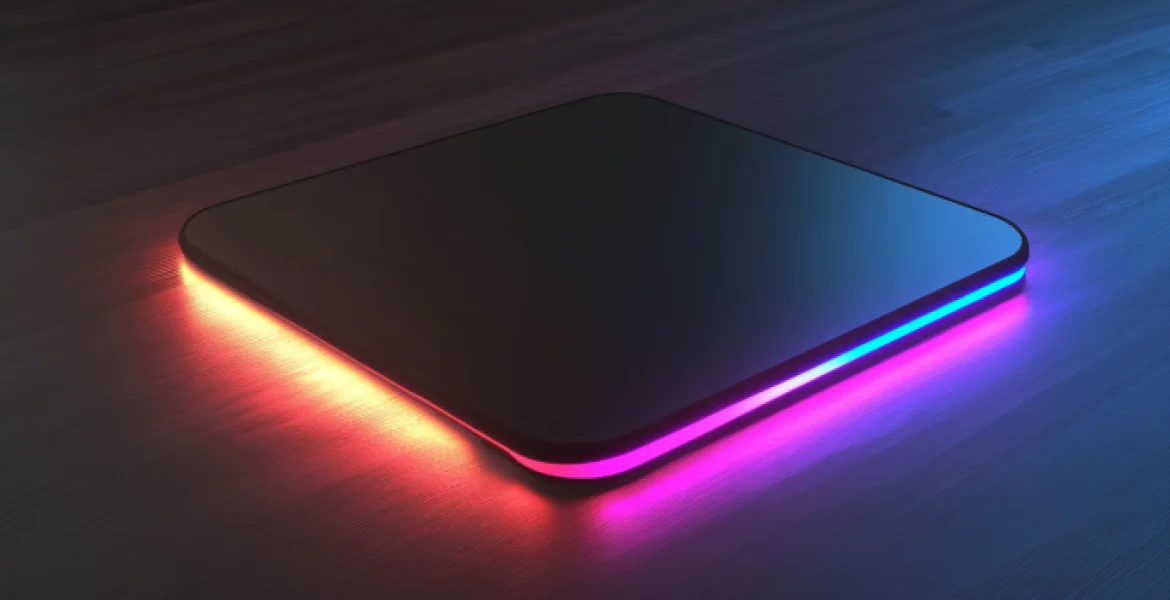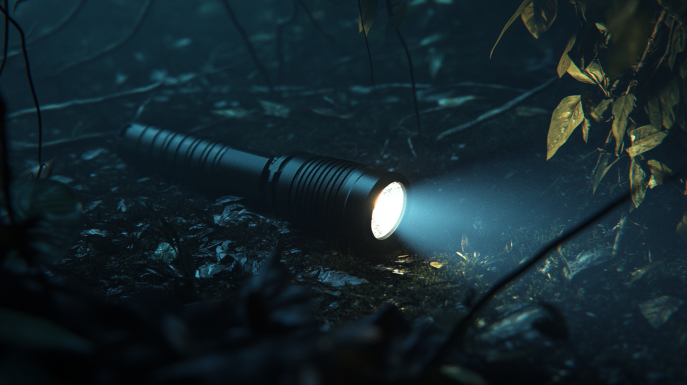
iFJF Jack Pad Suitable for Universal Vehicles 0.4
- Jack pads can protect the vehicle from damage to the welds and rocker panel during ascent, ensuring safe ascent of the vehicle
Your Car’s New Best Friend for Safe DIY Lifting and Support
As a car owner, you know that basic maintenance like oil changes, tire rotations, and brake pads are essential to keeping your vehicle running smoothly. While some automotive services are best left to the professionals, there are many repairs and upgrades you can tackle in your own garage with the right tools. However, lifting and safely supporting your car on jack stands is tricky without causing damage. That’s where the IFJF Jack Pad comes in – this simple but ingenious device protects your car’s pinch welds and provides a sturdy, non-slip base for jacks and jack stands. Keep reading our buying guide to learn all about the features and benefits of the IFJF Jack Pad and why it deserves a spot in both amateur and professional mechanics’ toolboxes.
Designed to Protect Your Car’s Pinch Welds and Lift Points
The pinch weld is the vulnerable seam where two pieces of metal are welded together, often located along the bottom edge of doors or where the side panels meet the rocker panels beneath the doors. Pinch welds are common jacking points for lifting a vehicle with a hydraulic floor jack or jack stands. However, placing the saddle or base of a jack directly on the pinch weld can damage the thin metal seam and surrounding paint. The IFJF Jack Pad serves as a protective barrier between your jack and the car’s pinch welds or other fragile jacking points.
The pad is made of a dense polyethylene plastic capable of bearing the weight of a full-size sedan or SUV. The durable material evenly distributes the pressure and load from the jack, preventing distortion of the car’s pinch welds, denting of body panels, or cracking paint and the factory undercoating. Whether you need to lift the front or rear end to change a flat tire or are supporting the car on jack stands for an oil change, the IFJF Jack Pad reduces stress on critical lift points for safe DIY jobs.
Fits Most Vehicle Jacking Points and Floor Jacks
This universal jack pad measures a sizable 3.5 inches wide x 5 inches long and works with most standard car floor jacks, quick lifts, and jack stands. The lips on the perimeter are tapered to a half-inch thickness, allowing it to slide easily under pinch welds while keeping the pad centered beneath your jack’s saddle. Two pegs on the underside grip the garage floor, parking lot asphalt, or driveway concrete so the pad stays put when you pump the jack handle rather than sliding out.
The IFJF Jack Pad works on the jack points of most passenger cars, crossovers, SUVs, and light trucks. It may be too small for the massive jack pads needed for heavy-duty rigs like semis. The pad can also be used beneath the flat bases of jack stands. While you only get a single pad in the package, you can position it to lift one wheel at a time when doing repairs or rotations. The shape and beveled edges even allow you to safely jack from the rear differential housing on trucks and SUVs with solid rear axles.
No More Dents or Paint Damage from DIY Lifting
Besides protecting your vehicle’s fragile pinch welds and seam, the IFJF Jack Pad prevents the jack or stands from inadvertently denting body panels when working underneath your car. The wide, flat pad distributes weight rather than concentrating it on a single point. The plastic construction also eliminates any metal-on-metal contact that could scratch or chip paint on side skirts, rocker panels, or door edges. Portable jacks that come with vehicles are notorious for marring paint around jack points due to their small metal saddles. A thick IFJF Jack Pad ensures no cosmetic damage occurs.
Sturdy and Skid-Resistant Construction
Machined from a solid piece of industrial-grade polyethylene, the IFJF Jack Pad provides a sturdy base that will not flex or crack under the thousands of pounds of pressure exerted when lifting a car. The dense plastic withstands years of exposure to weather elements, road grime, automotive fluids, and even salt without degrading. You don’t have to worry about chemical spills distorting the pad and reducing its effectiveness over time.
The polyethylene has a high friction coefficient to limit skidding even when the contact patch with your garage floor is minimized. The diagonally grooved bottom surface provides additional grip to keep the pad from slipping out of position when lifting on a slick concrete garage floor or pavers. A pair of stabilization nubs also dig into the ground for absolute steadiness beneath the jack. This stability ensures the lifted car remains safely supported during repairs instead of shifting off the jack stand.
Protects All Jacking Points – Pinch Welds, Rockers, and Frame
While the IFJF Jack Pad is purpose-built for protecting vulnerable pinch welds around a car’s perimeter, its versatile shape allows it to be used at multiple jacking points. The pad slots neatly under vehicle rocker panels for mid-car lift points. You can also safely position jack stands underneath sturdy frame components in the center area of unibody cars and trucks.
For regular oil changes and rotations, the pad slips seamlessly under factory-recommended front and rear jacking points. The broad, chamfered lips prevent tipping or slipping of the jack under load. For those working on lifted SUVs and trucks, the IFJF Jack Pad can protect the beefy rear differential housing or solid front axle when hoisting one end. The thick polyethylene construction holds up to repeated lifting better than the sheet metal housing.
Use with Caution on Electric Vehicles
Most electric vehicles (EV) have reinforced pinch welds, proprietary jacking mode functions, and designated lift points to accommodate their extreme weight from dense battery packs. While the IFJF Jack Pad can technically be used on any car, caution should be exercised when positioning jack stands under an EV. Consult your owner’s manual for the factory jacking procedure and check that jack stand weight ratings can accommodate the vehicle’s curb weight. Never rely solely on a hydraulic jack without supports when working underneath a car. Use the pad as an accessory protection measure on EVs rather than as the primary lift base.
Installs in Seconds Prior to Jacking
One of the IFJF Jack Pad‘s chief benefits is how quickly it can be installed before lifting your car. Just identify the factory jacking point, frame rail, or pinch weld you wish to position the jack under. Then slide the pad so the wide lips align underneath the lift point, keeping it centered. The tapered lip design ensures the pad tips easily to match the angle yet remains fully supported beneath the jacking point. Double check that the pad’s small teeth dig into the ground for grip. With the IFJF Jack Pad in place, you can now securely lower your hydraulic floor jack or jack stands onto the pad without fear of vehicle damage.
Buying Guide – Where to Purchase and Cost Considerations
The IFJF Jack Pad is sold individually or in pairs and can be purchased from several major automotive retailers:
- Amazon – Sold singularly for around $20 or as a pair for $40 with free Prime shipping. Units ship from Amazon directly for fastest delivery.
- AutoZone – Single pad priced at $25 and occasionally goes on sale. Check local stores for availability.
- JEGS – The pad is $30 when bought singly from the trusted mechanic’s supply store.
- Harbor Freight – A single jack pad is one of the lowest prices at just $14. Use caution buying from this discount tool chain and inspect closely for defects.
eBay and Walmart also market the IFJF Jack Pad from various third party sellers. Shopping on eBay risks buying a counterfeit or knockoff product versus authentic IFJF branded jack pads. For guaranteed authenticity, purchase directly from IFJF’s site or large retailers.
For DIYers who only occasionally work on their cars, buying the IFJF Jack Pad individually for around $20 is sufficient to protect all your vehicle’s jacking points when needed. Professional mechanics may want to purchase pairs for quick positioning without relocating a single pad. Investing in a duo also provides a spare in case one pad gets lost or damaged. Keep your garage or workshop safe for car lifting projects with the IFJF Jack Pad.
Rave Reviews From Amateur and Pro Mechanics
The IFJF Jack Pad earns consistent 5-star ratings and rave reviews from customers. Owners love the peace of mind and protection the pad provides when DIY lifting, especially the lack of paint damage afterward. Several reviews mention the pad working flawlessly for oil changes over many years without any degradation or flattening. Others report successfully using this universal jack pad on multiple vehicles from sedans to SUVs with no slipping issues despite its lightweight design.
Professional automobile technicians confirm the IFJF Jack Pad withstands shop use on customer vehicles day in and out while protecting pinch welds. The durability, longevity, grip, and damage prevention make mechanics happy they invested in this accessory. Off-roading enthusiasts mention the pad working superbly paired with bottle jacks and jack stands for lifting modified trucks and Jeeps by their solid axles without harming the housings. If you seek affordable insurance against crushing pinch welds or denting body panels when jacking up cars in your garage, the IFJF Jack Pad delivers reliable protection.
Fits Low-Profile Jacks for Tight Spaces
Don’t let a bulky floor jack prevent you from maneuvering around a low-slung sports car or crawler. Luckily, the compact IFJF Jack Pad is designed for use with “low-profile” jacks constructed for ultra-thin clearance. For example, the popular Powerbuilt Unijack is under 3 inches tall, allowing it to fit under cars with mere inches of ground clearance like Ferraris, Lamborghinis, and customized racers. With the IFJF Jack Pad inserted beneath pinch welds, rockers, and side skirts, you can safely position a low-profile jack that would normally damage bodywork due to its smaller saddle surface. Gain the clearance you need for repairs while still protecting sheet metal with this jack pad.
Slips Over Oil Drain Plugs When Lubricating Bolts
Part of proper suspension and steering maintenance involves greasing ball joints, control arm bushings, tie rods, sway bar links, and other joints periodically. The zerk fittings where grease is pumped can be difficult to access, sometimes requiring jacking for access. On occasion when trying to lubricate a bottom ball joint, the jack pad may partly obstruct the grease plug. Fortunately, the thin profile and beveled lips of the IFJF Jack Pad allow it to slip overGrease Zerks just enough to expose the nipple without fully removing the pad. Just be sure to wipe any excess grease off the surface before lowering the car. This helpful hack makes accessing lubrication points easier without sacrificing pinch weld protection.
Differential Lifts Made Safe on Trucks and 4x4s
Truck and SUV owners tackle unique projects like rear differential service, exhaust and drive shaft removal, or suspension work that require lifting from unibody points. The stout rear differentials on pickups and 4x4s allow jacking from their metal housing rather than using frame adapters. But dropping your hydraulic jack directly onto the diff risks denting the cover or distorting the sheet metal housing. The broad IFJF Jack Pad absorbs the intense pressure, protecting your differential housing while providing a stable base. The pad’s tapered edges center it on the diff for controlled lifting. Take advantage of this secure point of contact for working beneath your truck or Jeep.
Comes in Handy When Lacking Wheel Chocks or Ramps
Sometimes you need to lift only one corner of your car briefly to change a flat tire, tweak an adjustment, or access a top-side component. For quick jobs like this, you can forego floor jacks and jack stands which raise the entire vehicle. Simply position the IFJF Jack Pad under a tire and use your compact scissor jack to hoist that single wheel slightly. The wide pad evenly distributes load from the jack and remains firmly in place. Just be sure to set the parking brake and block the opposite wheel for safety. The IFJF Jack Pad substitutes for ramps or chocks in a pinch when doing fast tire swaps or brake work.
Jacking with Caution on Rubberized Undercoating
Modern unibody cars and trucks use thick, rubberized undercoating on floor pans, wheel wells, and pinch welds to reduce road noise and corrosion. While durable, this soft coating can increase the risk of slipping or puncturing when jacking unless pads are used. The IFJF Jack Pad‘s wide footprint disperses weight to avoid poking holes in undercoating from concentrated jack pressure. Its high-friction surface also sticks better to rubberized coatings versus metal jack saddle edges. Check the undercarriage for flaky undercoating around jacking points which could loosen when lifting. Use the IFJF Jack Pad to safely bridge any rubberized underbody protection.
Prevention Against Accidental Air Bag Deployment
Working under the vehicle’s dashboard to replace the radio or install wiring requires safely supporting the entire front end on jack stands. Care must be taken to avoid triggering the air bag sensors that detect the car is pitched upward. Using the IFJF Jack Pad helps increase the jack point contact patch and gradual lifting action. Keep all interior work time under suspension as brief as possible. Refer to your owner’s manual for the proper lifting and support points to avoid inadvertent air bag deployment when working inside the cabin. Never rely solely on a hydraulic jack to support a vehicle while underneath it. Use jack stands with pad protectors.
Watch for Signs of Wear or Damage
While built from durable polyethylene plastic to withstand years of service, check the IFJF Jack Pad periodically for signs of excessive wear. Look for deep grooves, pitting, or flattening on the contact surface. Cracked or distorted edges also indicate over-stressing and potential failure. If grease or oil makes the pad slippery, use a stiff brush and degreasing spray to restore grip. Should the support pegs on the bottom shear or wear down excessively, replace the unit for maximum stability. As a consumable item in harsh shop use, consider replacing the pads annually as cheap insurance against failure under load.
Use Added Height to Aid Accessibility
The IFJF Jack Pad only measures half an inch thick, but those extra few millimeters of height can be instrumental when you need just a bit more ground clearance to access certain parts. Case in point – cars with low splitters and chin spoilers often have tiny clearance around oil filters and skid plates. Using the pad gains you a touch more space to fit tools like filter wrenches to remove the old filter without needing to jack the car twice. Additionally, techs report the pad helps wedge open exhaust tips just enough to spray penetrating lube inside. Take advantage of the fractional lift for increased accessibility beneath your car.
Keep Pinch Welds Protected in Storage or Transport
Once you’ve completed a DIY repair or modification, be sure to protect freshly exposed pinch welds if storing the vehicle or trailering to shows and events. Parking on the pegs of jack stands outdoors can flatten and distort pinch welds over time, requiring expensive bodywork correction. Simply leaving the inexpensive IFJF Jack Pad centered under welds keeps them elevated off the ground during storage. Foam or wood blocks also work. Just never let metal car stands directly contact vulnerable pinch seams. The compact pads travel easily to safeguard painted exterior welds when trailering project cars.
Assists Proper Positioning of Floor Jacks
High-performance low riders, classic muscle machines, and vintage hot rods often have steeply angled pinch welds that make centering a jack saddle difficult. The tendency is to balance the heavy hydraulic jack precariously on the sloped edge. The IFJF Jack Pad allows you to finesse the jack onto its tapered lips first. Then align the centered pad squarely under the angled pinch weld for secure lifting. The chamfered lips cradle the jack base at the optimal contact angle without sliding. Getting floor jacks positioned correctly is made easier with this handy aligning tool before raising cars.
Slides Easily Under Rear Leaf Spring Perches
Leaf spring suspension trucks like old Ford F-Series pickups are notorious for catching floor jacks on their protruding spring perches, especially when lifting from the rear axle. The bent sheet metal perches hang down several inches, obstructing jack saddle placement. But the thin IFJF Jack Pad easily maneuvers between the leaf spring perches with clearance to spare. Its tapered lips center it under the axle housing for a broad, protective lifting base. Don’t risk your jack sliding sideways off the rounded differential. Use an IFJF pad for sure rear axle support on leaf sprung rigs.
Prevents Rust Jack Stains on Pinch Welds
After exposure to seasonal road grime, salts, and winter muck, the paint on your car’s rocker panels and pinch weld seams takes a beating. When jacking directly from steel jack stand bases or saddle edges, rust can transfer onto the vulnerable welds marring your paint. The IFJF Jack Pad‘s tough polyethylene construction never rusts or corrodes. Keeping this barrier between factory jacking points and jacks means no more frustrating rust stains down the sides of your car after storage or lifting. Maintain your vehicle’s exterior patina by preventing rust transfer indoors or outdoors.
Stack Multiple Pads for Added Height on Tall Lifts
Sometimes one IFJF Jack Pad doesn’t provide enough height for clearing extensive suspension and chassis modifications. For example, radically lifted Jeep Wranglers and rock crawlers may need inches of extra space between treacherous off-road terrain and underbody components. Stacking multiple IFJF Jack Pads on top of each other doubles the lift height while retaining a broad, stable base for jacks. With two or more pads stacked, you can safely jack from vulnerable points without damaging parts. Just be cognizant that taller pads slightly increase the risk of jack tip-over. Go slow and use jack stands religiously with stacked pad protectors.
Won’t Crack or Crumble Like Masonite alternatives
Fiberboard pads made of pressed wood or Masonite were once common DIY jack cushions. However, these makeshift pads can crack under pressure and shed crumbs that contaminate engine bays. Spills easily cause fiberboard pads to swell, deform, and disintegrate right when you need protection most during lifting. The IFJF Jack Pad resists all automotive fluids thanks to its leak-proof polyethylene composition. No cracking, splitting, or decomposition occurs over years of use thanks to the durable injection molded construction. Trust your vehicle’s finish to a pad engineered specifically for reliable lifting protection.
Sized For Motorcycles But Not ATVs/UTVs
Motorcycles and powersport vehicles also have vulnerable metal lift points and pinch welds requiring protection when jacking. Fortunately, the compact IFJF Jack Pad is perfectly sized to work with compact motorcycle scissor jacks, paddock stands, and small lift tables. Center the pad beneath kickstand brackets, crankcase covers, or exhaust pipes to prevent cosmetic damage during maintenance. Just be aware that larger ATVs, UTVs, and side-by-sides may overload the pad’s 3,500 lb capacity, so use caution or look for an oversized jack base. Defend your prized motorcycle from dings with this adaptable pad.
Protects Liftgates and Tailgates Too
Car owners know that scuffs and scratches easily accumulate on rear liftgates and tailgates from years of loading cargo and kids. When doing rear wiper, lights, or lock cylinder repairs, properly supporting the back hatch on a pad while lifting eliminates any risk of marring the painted finish. The same applies for protecting truck tailgates when removing or servicing them. Simply position the IFJF Jack Pad to cradle the underside of the liftgate/tailgate for safe, stable support. Dent-free repairs are easier thanks to the jack pad’s smooth plastic cradle.
Materials – Durable, Leak-Proof Polyethylene Plastic
The IFJF Jack Pad is constructed from polyethylene (PE) composite plastic for maximum durability when placed under jacks generating thousands of pounds of force. This specially formulated plastic is melted and injection molded into each pad’s unique tapered lip shape. Polyethylene offers high impact strength and density for load bearing capacity combined with rigidity that resists flexing. It also provides chemical and corrosion resistance while retaining long-term mechanical properties. Polyethylene works across a wide temperature range from sub-zero winter nights to blistering summer days in the garage without becoming brittle. This material ensures the pad protects pinch welds safely over years of amateur or professional use.
Made in America with Strict Quality Control
IFJF pioneered and patented their proprietary jack pad design which is proudly manufactured in the United States. The polyethylene plastic is sourced from American suppliers before being precisely molded in Illinois under tight tolerances. Every pad undergoes dimensional inspection and testing before sale. IFJF also offers a satisfaction guarantee and 1-year warranty against manufacturing defects, backing the quality of workmanship. Support American small business while protecting your car’s finish with a genuine USA-made IFJF Jack Pad for all lifting needs.
Conclusion
For affordably defending your car’s fragile pinch welds and jacking points against damage, the IFJF Jack Pad earns its reputation among DIY mechanics and professionals. This mighty little polyethylene pad enables safe vehicle lifting from multiple points, protecting sheet metal and paint from harm. Its tapered lips center jacks, while the textured underside prevents slippage when hoisting everything from low riders to lifted trucks. The Made in America quality, customer reviews, and peace of mind using the IFJF Jack Pad make this $20 accessory well worth the investment for your home or pro garage. Never jack directly again and keep your vehicles spotless with this ingenious jack pad.




